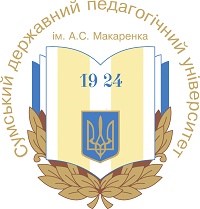PHYSIOLOGICAL CHARACTERISTICS OF CARDIOVASCULAR SYSTEM RECOVERY AFTER PHYSICAL EXERCISE IN YOUNG MALES OF DIFFERENT MORPHOLOGICAL TYPES
DOI:
https://doi.org/10.32782/naturalspu/2025.1.1Keywords:
сardiovascular reaction, biological anthropology, fat, skeletal musclesAbstract
The study focuses on analyzing the dynamics of changes in the functional parameters of the cardiovascular system during physical exercise in young males residing in the lowland areas of the Zakarpattia region, representing different morphological types. The research was conducted on 112 young males aged 17–21 years in the post-pubertal period of ontogenesis, residents of areas at altitudes of up to 400 meters above sea level in the Zakarpattia region. Observations, measurements, and analysis of adaptive changes in the functional parameters of the cardiovascular system were carried out during bicycle ergometry following two exercise loads of 1 W per 1 kg and 2 W per 1 kg, with a 5-minute interval, immediately after exercise, and three times post-exercise (at 1, 2, and 3 minutes). Somatotype was determined using the Heath-Carter method via caliperometry. The relative fat and muscle components of body mass were assessed through bioelectrical impedance analysis according to the criteria of McCarthy and D. Gallagher. The results demonstrated that after two workloads on the bicycle ergometer, which increased heart rate (HR) to 130–140 bpm, the recovery dynamics of HR exhibited a statistically significant decrease starting 30 seconds after the cessation of cyclic exercise. Following an exercise load of 2 W per 1 kg of body mass, which elevated HR to 180–190 bpm, the onset of a significant HR reduction was recorded after 120 seconds. Differences in arterial vascular responses to cyclic exercise were observed among young males from lowland areas of the Zakarpattia region, depending on their morphological type and body composition.During physical exertion at 90% VO₂ max, an increase in diastolic blood pressure (DBP) above baseline was observed only in endomesomorphic young males and those with a balanced somatotype. In contrast, young males with a low relative fat content and a very high relative skeletal muscle mass did not exhibit an increase in DBP above baseline. Thus, a relative predominance of the fat component and a relative decrease in the muscle component in the morphological profile of males induced a negative vascular response, leading to an increase in DBP above baseline.
References
Analysis of Environmental and Person-Oriented Factors Influence on Dental Caries Intensity among Children Population of Transcarpathia / M.O. Fera, O.V. Fera, V.M. Kryvanych, L.M. Bilyschuk, S.B. Kostenko, A.V. Kryvanych, Y. Yavuz, M.Y. Goncharuk-Khomyn. J. Int Dent Med Res. 2020. 13(4). P. 1326-1333.
Enhancement of physical health in girls of 17-19 years by adoption of physical loads taking their somatotype into account / V. Miroshnichenko, S. Salnykova, V. Bohuslavska, M. Pityn, Y. Furman, V. Iakovliv, Z. Semeryak. Journal of Physical Education and Sport. 2019. Vol. 19. Р. 387–392. https://doi.org/10.7752/jpes.2019.s2058
Improvement of adolescents’ adaptation to the adverse meteorological situation by means of physical education / I. Gorshova, V. Bohuslavska, Y. Furman, Y. Galan, I. Nakonechnyi, M. Pityn. Journal of Physical Education and Sport. 2017. № 17(2). Р. 892-898. DOI: https://doi.org/10.7752/jpes.2017.02136
Gaul C.A. Differences in anaerobic performance between boys and men / C.A. Gaul, D. Docherty, R. Cicchini. Int. J. Obes Relat. Metab. Disord. 2000. Vol.24. P. 7841-7848.
Gender Differences and the Influence of Body Composition on Land and Pool-Based Assessments of Anaerobic Power and Capacity / J. Zera, E. Nagle, E. Connell , E. Curtin W. Marget, A. Simonson, T. Nagai, J. Abt, S. Lephart. Int J. Environ Res Public Health. 2022. 19(13). 7902. DOI: https://doi.org/10.3390/ijerph19137902
Квашніна Л. В. Поняття адаптації і адаптованість як інтегральний показник здоров’я. Перинатологія та педіатрія. 2000. № 1. С. 33–36.
Karstoft K. Pedersen B. K. Skeletal muscle as a gene regulatory endocrine organ. Current opinion in clinical nutrition and metabolic care. 2016. 19(4). P. 270-275.
Overweight and obesity among Chinese college students: an exploration of gender as related to external environmental influences / S. Jiang, S. Peng, T. Yang, R.R. Cottrell, L. Am. Li. Journal of Men’s Health. 2018. 12. P. 926–934. DOI: https://doi.org/10.1177/1557988317750990
Ryan-Stewart H., Faulkner J., Jobson S. The influence of somatotype on anaerobic performance. PLoS One. 2018. 13(5):e0197761. DOI: https://doi.org/10.1371/journal.pone.0197761
Boiko М. О. Features of aerobic productivity of athletes of 17-21 years of different sports specialization. Modern Scientific Researches. 2020. 12(2). Р. 68-77. DOI: https://doi.org/10.30889/2523-4692.2020-12-02-046204
Del Rosso S., Nakamura F.Y., Boullosa D.A. Heart rate recovery after aerobic and anaerobic tests: is there an influence of anaerobic speed reserve? Journal of Sports Sciences. 2017. № 35(9). P. 820–827. DOI: https://doi.org/ 10.1080/02640414.2016.1166391
Kenney L. W., Wilmore J.H., Costill D. L. Physiology of Sport and Exercise. Human Kinetics, 2019. 648 р.
Physical Health of Females from the Lowland Districts of Zakarpattia According to the Metabolic Level of Aerobic and Anaerobic Energy Supply Depending on the Component Body Composition / O. Dulo, Yu. Furman, O. Maltseva, S. Samoilenko. Wiadomości Lekarskie. 2023. 76(3). P. 568-574. DOI: https://doi.org/10.36740/wlek202303116
Фурман Ю.М., Мірошниченко В.М., Драчук С.П. Перспективні моделі фізкультурно-оздоровчих технологій у фізичному вихованні студентів вищих навчальних закладів. Київ: Олімпійська література, 2013. 175 c.
Carter J. The Heath-Carter anthropometric somatotype. Instruction manual. Department of Exercise and Nutritional Sciences San Diego State University. CA. U.S.A., 2003. 26 p.
Berral-Aguilar A.J. Body Composition, Somatotype and Raw Bioelectrical Impedance Parameters of Adolescent Elite Tennis Players: Age and Sex Differences / A.J. Berral-Aguilar, S. Schröder-Vilar, D. Rojano-Ortega, F. Berral- de la Rosa. J. Int J Environ Res Public Health. 2022. 19(24). 17045.
Dahlmann N., Demond V. A new anthropometric model for body composition estimation: Comparison with a bioelectrical impedance consumer device. PLoS One. 2022. 17(9): e0271880.







